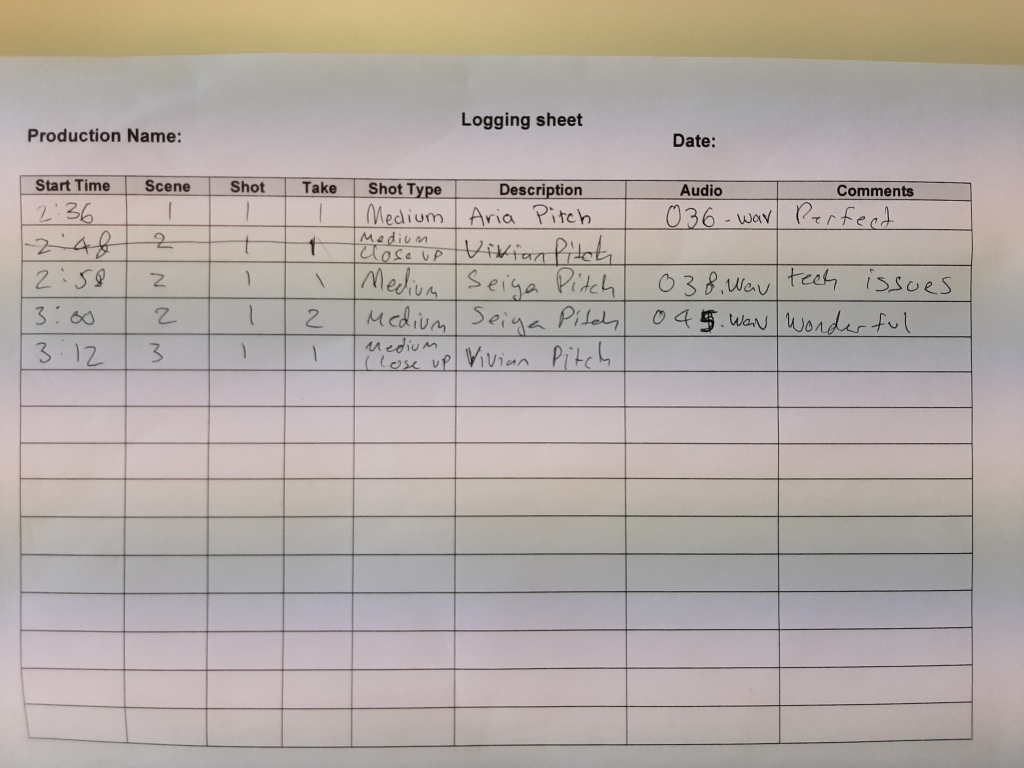A jump cut is a single shot with a cut in between, it presents just the most necessary parts of a narrative while also showing the viewer the passage of time. An example of this can be seen during the exercising scene in my final film and during the montage sequence.
You can see that the same frame is maintained but the actors change position as time progresses.
Cutting on the action helps to draw the audience into the story. The camera angle is changed in the middle of the action but still focuses on the main character. For example we see a character dribbling a basketball in the first shot, the next scene cuts in to him shooting a hoop. This makes the action seem more intense and engaging for the audience.

Since we shoot a lot of footage during film production, a logging sheet is needed to keep track of which shots were successful or not. Notes on each shot are logged so the editors know which shots to use. It’s especially useful during post-production as the editors know which audio file belongs to which video file.

The 180 degree rule is a guideline for when you have two characters on screen. The rule sets an imaginary line between two characters, or between a character and an object. By keeping the camera on one side of this imaginary line, the characters maintain the same left/right relationship to each other, making the scene easier to follow.
When the camera jumps over the invisible line, this is known as crossing the line, this can be very distracting for the audience.
Note that the camera never crosses the imaginary line over the characters. The camera can move to the left or right of the frame but never crosses the line to the opposite side.

The 30 degree rule is a film editing guideline that states the camera should move at least 30 degrees relative to the subject between each successive shot of the same character.
You have to move the camera more than 30 degrees between each cut to avoid the scene being jarring to the audience. This also applies if the shot type changes, eg: full shot to close up, you have to make sure the camera moves at least 30 degrees, otherwise the audience will think you have used a special effect instead of a cut.
I added a lot to my film after my first draft. I added an establishing wide shot of the postman walking to my house to deliver the letter. At the end I also added an ending scene which pans up to the sky symbolising change and hope. I got rid of the preset transition as they were too jarring and hurt the flow of the overall film. I also added a couple of scenes in the middle of my film to help with continuity and narrative flow. The original film was too jarring and ended abruptly, adding more scenes helped boost the quality of my narrative and make the film more believable.
Having three different backing tracks helps the viewer emotionally resonate with the film. It also nicely divides the film into a beginning, middle and end; making the overall narrative more impactful.